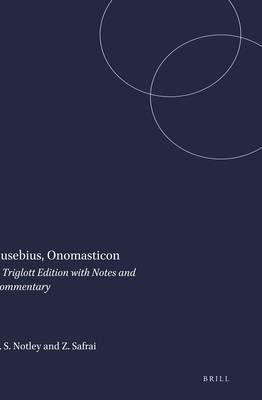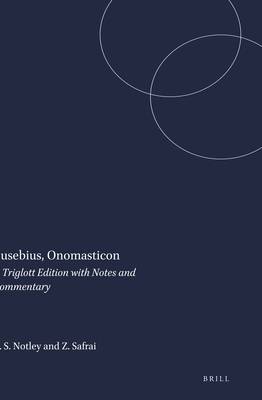
Je cadeautjes zeker op tijd in huis hebben voor de feestdagen? Kom langs in onze winkels en vind het perfecte geschenk!
- Afhalen na 1 uur in een winkel met voorraad
- Gratis thuislevering in België vanaf € 30
- Ruim aanbod met 7 miljoen producten
Je cadeautjes zeker op tijd in huis hebben voor de feestdagen? Kom langs in onze winkels en vind het perfecte geschenk!
- Afhalen na 1 uur in een winkel met voorraad
- Gratis thuislevering in België vanaf € 30
- Ruim aanbod met 7 miljoen producten
Zoeken
€ 361,95
+ 723 punten
Omschrijving
One of the challenging tasks for archaeologists and biblical historians alike is the identification of sites mentioned in the Bible--some of which were destroyed and disappeared in time without a trace. The first comprehensive attempt to locate these places was that of Eusebius, the bishop of Caesarea and fourth-century church historian (ca. 260-339 CE). In his Onomasticon Eusebius cataloged most of the cities, sites and regions mentioned in the Old and New Testaments. Supplementing his list when possible, Eusebius provided detailed information concerning the sites' history and location, including their distances in Roman miles from other well-known metropolitan centers in fourth century Palestine.
The Onomasticon of Eusebius is the most important book for the study of the Land of Israel in the Roman period. Scholars and students alike will find his work indispensable for an understanding the physical settings of the biblical narrative.
The Onomasticon of Eusebius is the most important book for the study of the Land of Israel in the Roman period. Scholars and students alike will find his work indispensable for an understanding the physical settings of the biblical narrative.
Specificaties
Betrokkenen
- Auteur(s):
- Uitgeverij:
Inhoud
- Aantal bladzijden:
- 252
- Taal:
- Engels
- Reeks:
- Reeksnummer:
- nr. 9
Eigenschappen
- Productcode (EAN):
- 9780391042179
- Verschijningsdatum:
- 15/06/2005
- Uitvoering:
- Hardcover
- Formaat:
- Genaaid
- Afmetingen:
- 190 mm x 254 mm
- Gewicht:
- 807 g

Alleen bij Standaard Boekhandel
+ 723 punten op je klantenkaart van Standaard Boekhandel
Beoordelingen
We publiceren alleen reviews die voldoen aan de voorwaarden voor reviews. Bekijk onze voorwaarden voor reviews.









